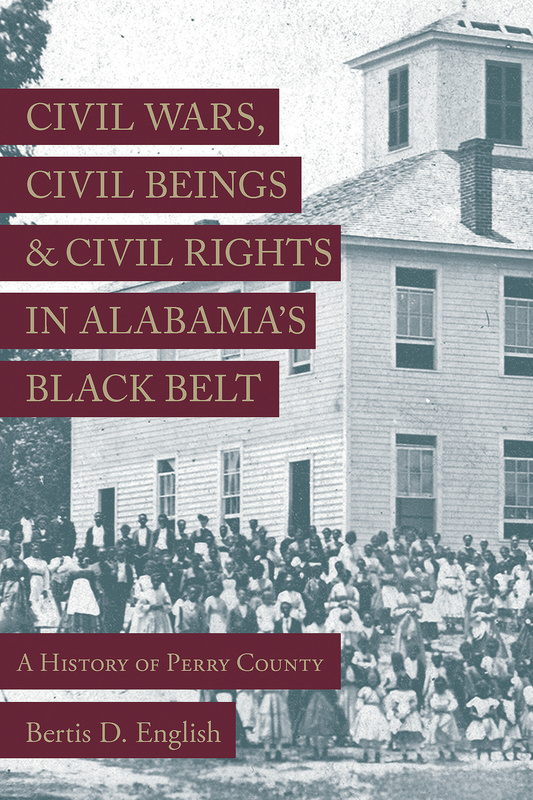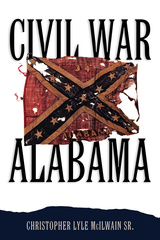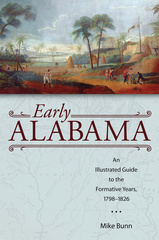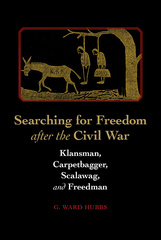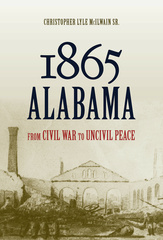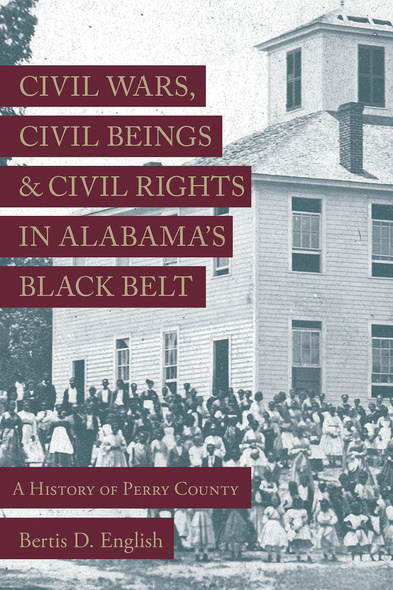
Civil Wars, Civil Beings, and Civil Rights in Alabama's Black Belt
A History of Perry County
In his fascinating, in-depth study, Bertis D. English analyzes why Perry County, situated in the heart of a violence-prone subregion of Alabama, enjoyed more peaceful race relations and less bloodshed than several neighboring counties. Choosing an atypical locality as central to his study, English raises questions about factors affecting ethnic disturbances in the Black Belt and elsewhere in Alabama. He also uses Perry County, which he deems an anomalous county, to caution against the tendency of some scholars to make sweeping generalizations about entire regions and subregions.
English contends Perry County was a relatively tranquil place with a set of extremely influential African American businessmen, clergy, politicians, and other leaders during Reconstruction. Together with egalitarian or opportunistic white citizens, they headed a successful campaign for black agency and biracial cooperation that few counties in Alabama matched. English also illustrates how a significant number of educational institutions, a high density of African American residents, and an unusually organized and informed African American population were essential factors in forming Perry County’s character. He likewise traces the development of religion in Perry, the nineteenth-century Baptist capital of Alabama, and the emergence of civil rights in Perry, an underemphasized center of activism during the twentieth century.
This well-researched and comprehensive volume illuminates Perry County’s history from the various perspectives of its black, interracial, and white inhabitants, amplifying their own voices in a novel way. The narrative includes rich personal details about ordinary and affluent people, both free and unfree, creating a distinctive resource that will be useful to scholars as well as a reference that will serve the needs of students and general readers.
Bertis English presents a treasure chest of relevant and important historical material related to Perry County, Alabama, providing information that comprehensively illuminates experiences of the area’s residents in a way that state and regional studies cannot.’
—Kenneth M. Hamilton, author of Booker T. Washington in American Memory
Among the understudied aspects of Reconstruction, are the places where the Klan dog didn’t bark, much, and where terrorist violence was less common. Bertis English’s book examines one of these areas, where white elites and freedpeople stepped back from the brink of all-out racial conflict. Understanding how this occurred, and what the constraints were, animates this illuminating study. This unusual approach deserves attention.’
—Michael W. Fitzgerald, author of Reconstruction in Alabama: From Civil War to Redemption in the Cotton South
Civil Wars, Civil Beings, and Civil Rights in Alabama’s Black Belt offers evidence as to why communities such as Perry County should be studied by everyday citizens, local leaders, politicians at each level, activists, and students of every race, socioeconomic background, gender, and region. This book does work that state, regional, and national studies tend not to accomplish. It intersects intertwined narratives of common and affluent people through racialized dialogues and with help from interracial articulations to push forward a Black agenda that demanded respect from opportunistic white egalitarians in a highly politicized local space.’
—Journal of Southern History
A Note about Terminology
List of Illustrations
Foreword
Acknowledgments
Introduction
1. Secession and War
2. Political Organization, Economic Reorganization, and Racial Violence in the Aftermath of War
3. Religious and Educational Development from the Antebellum through Early Postbellum Years
4. First Redemption, 1870 to 1872
5. Rousing Reconstruction: The Republican Interlude of 1872 to 1874, Part I
6. Racial Conflict, Agricultural Competition, and Political Conquest: The Republican Interlude of 1872 to 1874, Part II
7. The Onset of Second Redemption, 1874 to 1875, and Onward
8. Hope, Travail, and Reconciliation: The Importance of Perry County, Past and Present
Appendix A: Black Delegates to the 1867 Alabama Constitutional Convention
Appendix B: Perry County Business Licenses, 1870 and 1871
Appendix C: African Americans Who Held Major Political Offices in Alabama, 1867 to 1875
Appendix D: Historically Black American Colleges and Universities That Predate the Alabama State Lincoln Normal School and University in Marion
Appendix E: Black Men in Perry County Who Voted for the 1875 State Constitution
Appendix F: Selected Earned Doctorates by Alumni of the Alabama State Lincoln Normal School and University in Marion, 1884 to 1936
Notes
Selected Bibliography
Index

